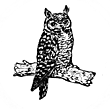|
- Home
- Programs
Scroll down to view recordings of previous programs.
View recordings of past programs:
Feather Parasites October 2025
Birdbath Ecology September 2025
Wandering with a Good Camera June2025
Birding the Galapagos May 2025
3-Toed Woodpecker in NYS April 2025
Birding Reelfoot Lake February 2025
Birding New Mexico December 2024
Birding Big Year November 2024
Birding Madagascar, October 2024
Birding Southern Ecuador, September 2024
Iceland Bird Photography, March 2024
Birding Central Park, January 2024
Birding Costa Rica, Part 2, December 2023
Birding Costa Rica, Part 1, November 2023
Birding Northern India, June 2023
Warren Green's Bird Photography, May 2023
Audubon's Migratory Bird Initiative, April 2023
Birding New Mexico, March 2023
Update on NYS Breeding Bird Atlas, February 2023
The eBird Review Process, January 2023
Birds of Vischer Ferry, December 2022
Birds and Nature of Hawaii, November 2022
Grassland Birding, October 2022
Woodcock Ecology, September 2022
Digital Photo Workshop, June 2022
Bird Research at the Pine Bush Preserve, May 2022
Penguins in Antarctica, April 2022
The Language of Birds, February 2022
Great Lakes Piping Plovers, October 2021
The California Gnatcatcher Story, April 2021
Flycatcher Identification, March 2021
Birding the West Indies, February 2021
Wildlife Rehabilitation, December 2020
Spruce Grouse in New York , November 2020
